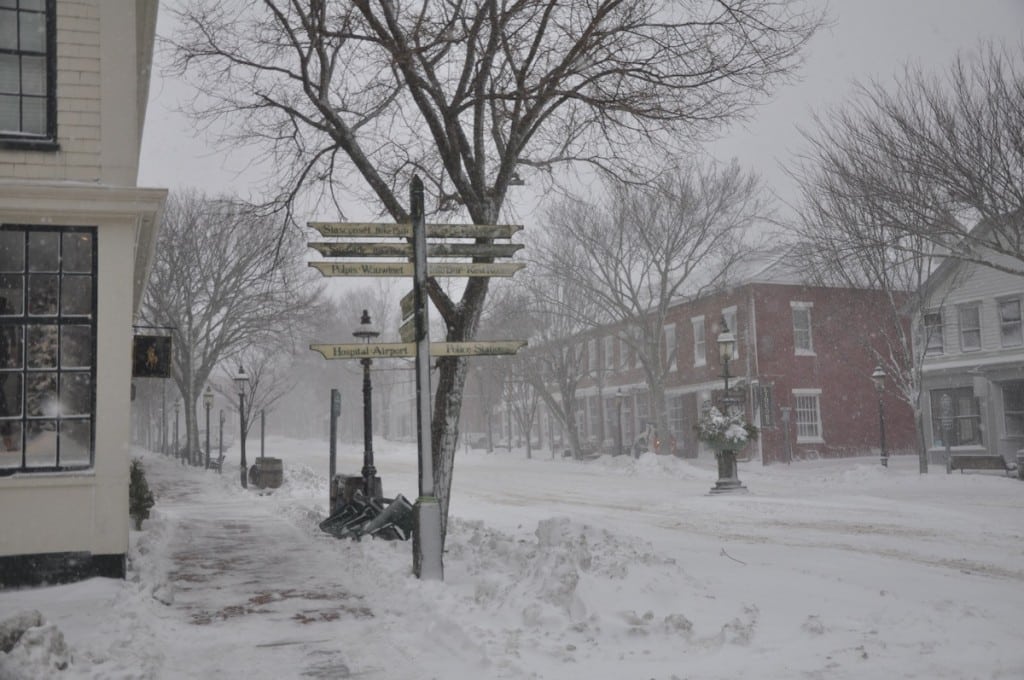by Robert P. Barsanti
This winter remains in the shadows and in the base of the bushes. It squats, cold and frozen, in the darkness, until the rain and the sun finally drive the dirty ice underground. The crocuses remain hidden under the frozen turf, as do the daffodils. Sometime in the third inning of the Red Sox season opener, they will push themselves through the newly mudded earth and bloom. We will find them, take a picture, then look east for the next storm.
For most of my time on island, winter never quite crossed the canal. It came rolling up the coast, collided with a cold front of Worcester, and cancelled school in every town where you couldn’t hear a rolling surf. But, the months out here would pass in sweaters and drizzle, with the occasional windstorm blowing melting flakes of snow over from Hyannis. The crocuses would sprout by Valentine’s Day and the first daffodils burst yellow before Spring Training started.
This year, the season came with ice storms, blizzards, and snowy owls. Heroic snow drifts formed over Cliff and Polpis Road, then slowly melted into the turf. One polar vortex after another locked the harbor in ice and protected the scallops from rakes and drags. In between storms and freezes, we left the sofa and went in search of Snowy Owls hunting in the dunes and grasslands. The silent hunters became our quarry, just out of range of gigantic lenses. We caught them occasionally when the perched on a fence post or dead tree. Mostly, however, they flitted just barely out of our range, like the eye of God. They danced, darted, and hid.
Winters on Nantucket, even in the coldest and most violent of years, do not have a great deal of snow, ice, or owls. When the snow falls, it comes as a catastrophic novelty. The winds sculpt great towers and walls, the ice reshapes the horizon, and we take pictures to show the familiar scenes marred by a storm. Winter is unusual and odd in those flooded and wind-blown moments.
An island winter, however, isn’t marked so much by storms as it is by sand. All summer, we fool ourselves into thinking that the island is a golf course encircled by beaches and bike paths, but the winter blows those happy truths into the sea in a blizzard of sand. Downtown, the streets are pulled aside to reveal the slippery foundation of the island. At Dionis, In Sconset, and along the western shore, the rich amass sand castles at the base of their homes. They truck the sand out, parcel it out on a conveyor belt, then drop it onto the beach. Then, one storm, or another, or perhaps just a full moon, will sweep thousands of dollars of protection away and return it to a sand bar.
We stand, build, live, and die on sand. We pretend to live on beautiful rolls of turf. The landscapers lay it out, roll it down, and then water it for a few days until it seems to take. But underneath an imported roll of bluegrass and two inches of dirt sits a thousand feet of shifting sand. The storms come and heave away tons of these stuff, while the turf pauses in mid-air at the top of the bluff. The tides settle it into Dionis or Jetties, or swirl it back out to the sand bars and rips that circle the island. Illusions and make-believe fantasies dry up and blow away in the winter; the brown truth of our lives hold us up. We all know the future. We all know his how the story ends. The sand will wear away everywhere and our small hillock will sink under the dark water. We are all bound for the ocean, one way or another.
In the middle of this winter, a former student died alone and in the cold. At his memorial, we stood together and wished for another ending; we thought of sofas, and blankets, and anything we could have done or said to have kept him from washing away. We survivors stood in the parking lot, wrapped in winter clothes, topped with hats, and leaning back into the wind. The ocean sent breaker upon breaker onto the beach, the clouds passed over us, and a dozen seagulls huddled against the bluff.
We took a lesson from those wiser birds and circled up between two dunes. We sang “Amazing Grace,” said a few prayers, and then, as the wind picked up and the sand flew like hail, we sang “The Rose” into the apathetic air. For a brief moment, we considered placing the ashes into the ocean, but realized that they, like the sand, would soon fly into the wind and across the island. His final rest in the dark water could wait for another day and another beach. Sand has no rush.
But we were there. We had raised him, taught him, listened to him, befriended him, laughed, cried, and now mourned what was inside a small urn. In the howling infinite of the mid-afternoon, we did the only things left to us; we circled, we stood, and we sang. We remembered a young man who was gone too soon and we stood against the wind in his memory. We huddle together, we stare into each other’s faces, and we sing words that will be whipped and shredded in seconds.
That’s the other awful truth of the winter. Other seasons indulge the illusion that this door is for members only and that only yachtsmen and their guests are allowed beyond this point. Winter scrapes those fantasies bare. We have only each other. For better or worse, on one side of the law or the other, we remain huddled in the lee of the wind, beset by waves and wind, and clinging to another’s jacket.

